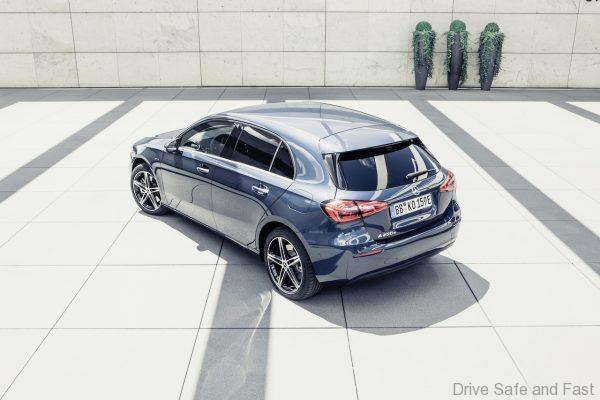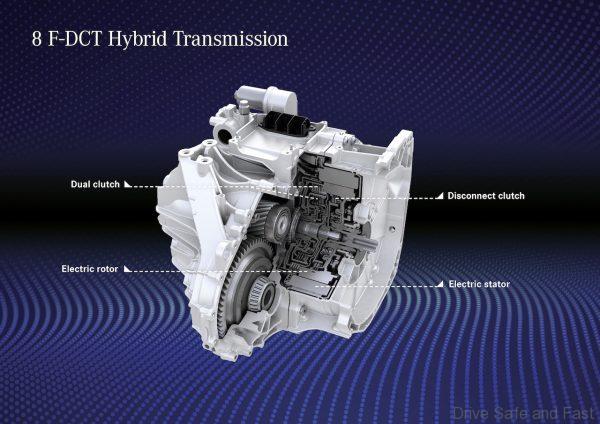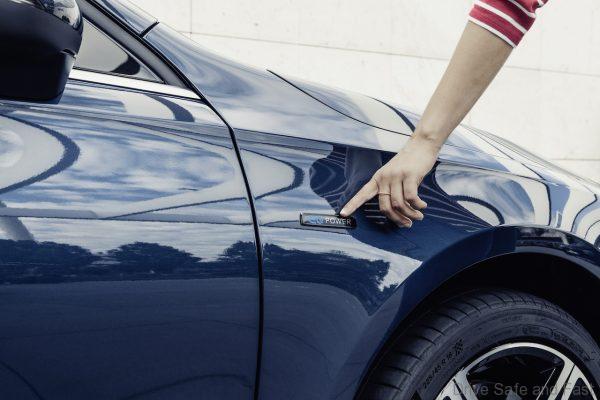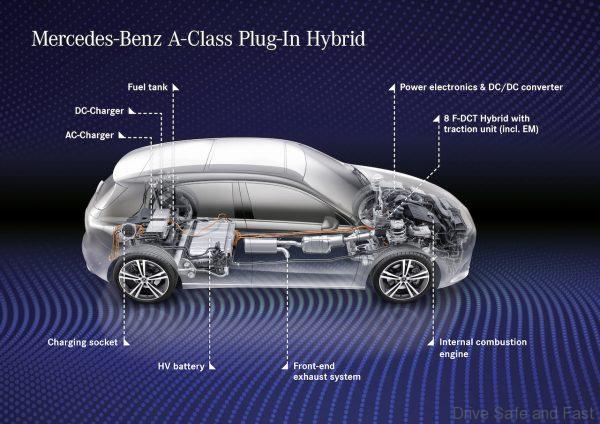Since 2016, we’ve been seeing a lot of large premium cars coming in with PHEV options. Well, now Mercedes-Benz are offering a new PHEV system on their A-Class and B-Class.
And yes, the system will be available on the A-Class hatch and saloon as well. Mercedes-Benz plans to offer PHEV options to more than 20 models by 2020, so this is a good step in that direction, crossing an additional 3 models off that list.

Since Malaysia has yet to receive the new B-Class, we’ll concentrate our coverage here on the A-Class hatch and sedan models.

The models will be called the A 250 e, in line with the Mercedes-Benz PHEV nomenclature.
Here are the performance highlights:
- Electric operating ranges of 70-75 km (NEDC)
- Electric output 75 kW
- Combine system output 160 kW (218hp)
- Combined system torque 450 Nm
- Top speed 140 km/h (electric)/235 km/h (total; A-Class Compact Saloon)
- Acceleration 0-100 km/h in 6.6 seconds (A-Class Compact Saloon)
- 15.6 kWh lithium-ion battery
- a 7.4 kW wallbox will charge it from 10%-100% in 105 minutes
- DC charging gets it from 10%-80% in 25 minutes
- Hardly any restrictions on the load compartment
As these are smaller Benzes, they feature transversely mounted engines. As such, a compact hybrid traction head was developed for use with the 8F-DCT dual-clutch automatic. They operate on the same principle as the longitudinally mounted Benz PHEVs.

Here is how the system is described:
It is a permanently excited synchronous machine as an internal rotor. The stator is permanently integrated in the traction head housing, while the low-loss wet clutch is incorporated in the electric machine’s rotor. On-demand stator and rotor cooling allow use of the electric motor’s peak and continuous output without any problems.

What’s new on this smaller PHEV is that the electric motor acts as the car’s 12-V starter motor. So yes, in the event of a battery failure, you won’t be able to start the car’s petrol engine.
Strange layout
To make room for some of the EV components, Mercedes-Benz has moved the exhaust exits in the centre of the vehicle, under the floor. Its silencer is housed in the tranmission tunnel, with the fuel tank being moved into the axle installation. That gives them room to shove the who batteries underneath the rear seats, thus only minimally affecting boot space compared to the regular A-Class models.

Of course, this might mean the heat from the batteries and their controller might get transferred into the cabin as we’ve seen even on some locally sold hybrid models. May not be a problem in Europe in Winter. Let’s see if these concerns are addressed if Mercedes-Benz Malaysia decides to bring this in. Without local assembly of the A-Class or proper NAP guidelines, it’ll probably be a while though.



